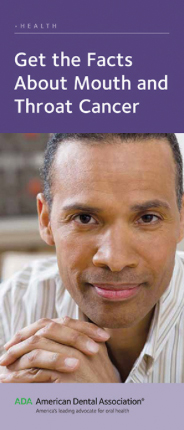Source: www.dentistryiq.com
Author: Maria Perno Goldie, RDH, MS
Public awareness of head and neck cancer (HNC) is limited, with the lack of awareness including the term head and neck cancer and common symptoms and risk factors, such as tobacco use and human papillomavirus (HPV).1 The online survey of 2,126 randomly selected adults in the United States. Most respondents lacked understanding of the organs or tissues affected by head and neck cancer, with 21% incorrectly identifying brain cancer as head and neck cancer. Only 0.8% of respondents identified HPV infection as a risk factor for mouth and throat cancer, but more were aware of the vaccine.
The investigators projected that extensive HPV vaccination could prevent almost 9,000 cases of oropharyngeal cancer yearly. The conclusion was that self-reported and objective measures indicate that few American adults know much about HNC including risk factors such as tobacco use and HPV infection and common symptoms. Strategies to improve public awareness and knowledge of signs, symptoms, and risk factors may decrease the disease burden of HNC and are important topics for future research. The American Dental Association has a pamphlet titled “Get the Facts About Mouth and Throat Cancer.”2
Human papillomavirus type 16 (HPV-16) is a major contributory factor in oropharyngeal squamous cell carcinoma (OPSCC). The detection of primary OPSCC is often delayed due to the complicated anatomy of the oropharynx. One study examined the possibility of HPV-16 DNA detection in pretreatment and posttreatment plasma and saliva and its possible role as a marker of prognosis.3 A retrospective analysis of a prospectively collected cohort of patients with oropharyngeal and unknown primary squamous cell carcinoma with known HPV-16 tumor status was conducted. Real-time quantitative polymerase chain reaction was used to identify HPV-16 E6 and E7 DNA in saliva and plasma samples.
The conclusion of the authors is that use of a combination of pretreatment plasma and saliva can increase the sensitivity of pretreatment HPV-16 status as a tool for screening patients with HPV-16–positive OPSCC. Also, analysis of HPV-16 DNA in saliva and plasma after primary treatment may make it easier to detect recurrence in patients with HPV-16–positive OPSCC at an earlier stage.
HPV is the leading cause of oropharyngeal cancers, and a very small number of front of the mouth, oral cavity cancers. HPV16 is the version most responsible, and affects both males and females. It is a sexually transmitted disease, and while there is no cure, it can be prevented. Practicing safe sex is one way, and vaccination is another way. Two vaccines, Gardasil and Cervarix, protect against the strains of HPV that cause cervical cancers (HPV16 and 18). Garadsil also protects against two versions that cause genital warts (HPV6 and 11). Millions of young girls in the United States and in developed countries around the world have been safely vaccinated with an HPV vaccine.4
For more information, visit the Oral Cancer Foundation, or the Oral Cancer Cause (OCC).4,5 “OCC’s purpose is to improve the quality of life for oral cancer patients through financial support so that they may face the world with peace and dignity during and after medical treatment.”5
Oral mucositis is a common complication of cancer chemotherapy, whether for head and neck or other cancers, and is often present after radiation for head and neck cancer. The purpose of one study was to compare the beneficial effects of treatment modalities, including topical steroid, honey, and honey plus coffee, in patients suffering from oral mucositis.6 The results showed that all three treatment regimens reduce the severity of lesions. The best reduction in severity was achieved in the honey plus coffee group. The honey group and topical steroid group took the second and third places. While further study is encouraged, the honey plus coffee regimen was the most effective modality for the treatment of oral mucositis in this study.
Another study found that treating cancer with bacteria shows real promise.7 They directly injected Clostridium novyi, a common bacteria species that does not need oxygen to survive, into tumors in a small study. It shrunk or eliminated tumors and possibly bolstered the immune system to continue targeting tumor cells for up to two years.
Maybe one day we will be able to cure cancer!!
References
- Luryi AL, Yarbrough WG, Niccolai LM, Roser S, Reed SG, Nathan CA, Moore MG, Day T, and Judson BL. Public awareness of head and neck cancers: a cross-sectional survey. JAMA Otolaryngol Head Neck Surg. 2014 Jul 1;140 (7):639-46. doi: 10.1001/jamaoto.2014.867.
- http://www.ada.org/en/publications/ada-news/2014-archive/june/raise-awareness-of-mouth-and-throat-cancer-among-patients-with-ada-brochure.
- Ahn SM, Chan JK, Zhang Z, et al. Saliva and Plasma Quantitative Polymerase Chain Reaction–Based Detection and Surveillance of Human Papillomavirus–Related Head and Neck Cancer. JAMA Otolaryngol Head Neck Surg. Published online July 31, 2014. doi:10.1001/jamaoto.2014.1338.
- http://www.oralcancerfoundation.org/hpv/hpv-oral-cancer-facts.php.
- http://oralcancercause.org/.
- Raeessi MA, Raeessi N, Panahi Y, et al. “Coffee plus Honey” versus “topical steroid” in the treatment of Chemotherapy-induced Oral Mucositis: a randomised controlled trial BMC Complementary and Alternative Medicine 2014, 14:293. http://www.biomedcentral.com/1472-6882/14/293.
- Roberts NJ, Zhang L, Janku F, et al. Intratumoral injection of Clostridium novyi-NT spores induces antitumor responses. Sci. Transl. Med. 6, 249ra111 (2014).




Leave A Comment
You must be logged in to post a comment.